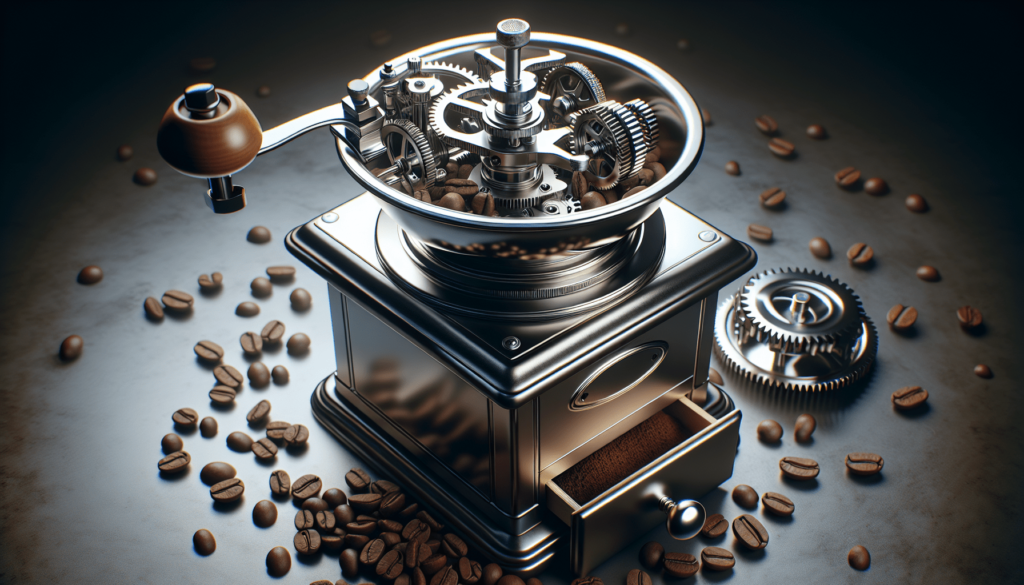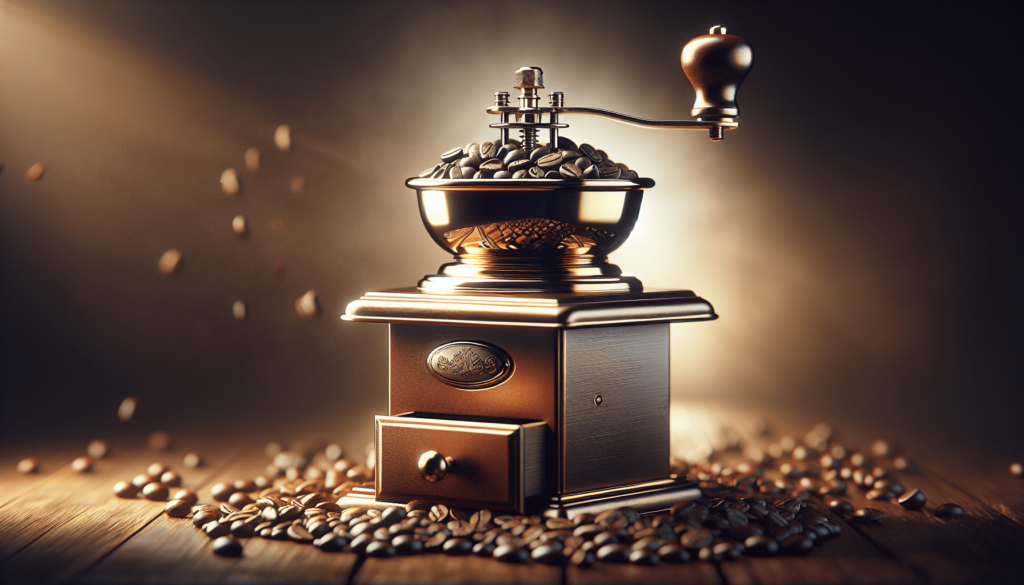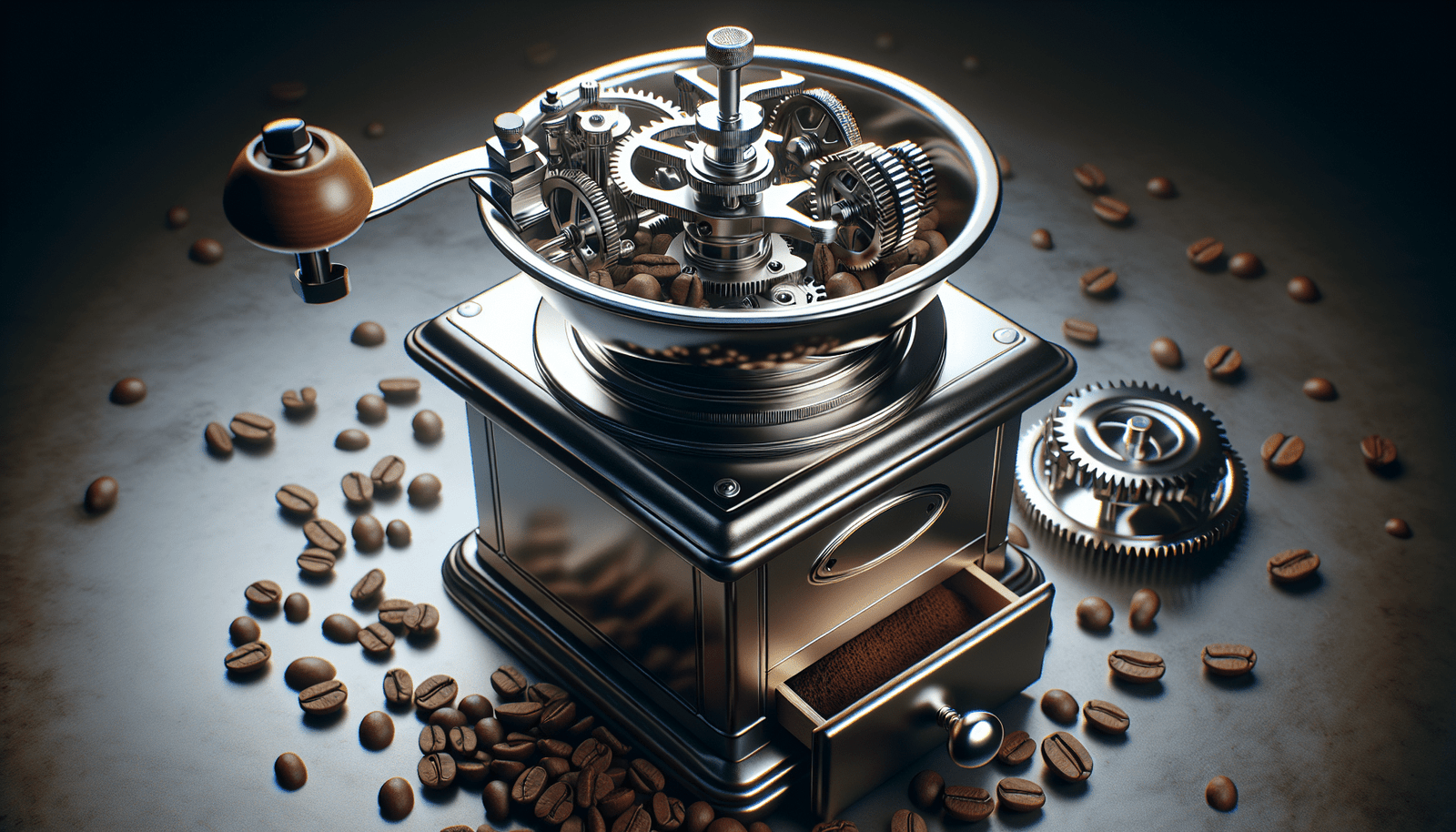If you’re a coffee lover looking to up your espresso game, one of the most important decisions you’ll need to make is choosing the right coffee grinder. With so many options available in the market, it can be overwhelming to find the perfect fit. However, fear not! In this article, we’ll guide you through the process of selecting the ideal coffee grinder that will help you achieve that perfect shot of espresso every single time. So, grab a cup of your favorite brew and let’s get started on this caffeinated journey!
Types of Coffee Grinders
When it comes to grinding coffee beans for your daily brew, there are two main types of coffee grinders to choose from: burr grinders and blade grinders. Each has its own unique characteristics and benefits, so it’s important to understand the differences between them before making a decision.
Burr Grinders
Burr grinders are considered the gold standard in the coffee world and are highly recommended for espresso lovers. These grinders utilize two abrasive surfaces, known as burrs, to crush the coffee beans into consistently sized particles.
Conical Burr Grinders
Conical burr grinders are a popular choice due to their efficient grinding and durability. They feature a cone-shaped burr that spins against a stationary burr, ensuring a precise and uniform grind size. Conical burr grinders are known for producing excellent results, especially for espresso brewing, and are favored by coffee enthusiasts.
Flat Burr Grinders
Flat burr grinders, on the other hand, have two flat burrs that grind the beans. While they may not be as common as conical burr grinders, they excel in producing consistent and even-sized grounds. Flat burr grinders are particularly well-suited for espresso brewing and often offer a range of grind size settings to meet different preferences.

Blade Grinders
Blade grinders are the more affordable and commonly found option in most households. They feature a blade that rapidly spins and chops the coffee beans to create grounds. While blade grinders can get the job done, they tend to produce grounds with less consistency compared to burr grinders.
Pros
One advantage of blade grinders is their affordability. They are typically more budget-friendly than burr grinders, making them an accessible option for casual coffee drinkers. Blade grinders are also simple to use, requiring minimal effort and no complex settings.
Cons
The main drawback of blade grinders is their lack of consistency. Since the blade chops the beans, the resulting grounds can vary in size, which can negatively affect the flavor and overall quality of your coffee. Additionally, blade grinders tend to generate more heat during the grinding process, potentially altering the flavor profile of the coffee.
Factors to Consider
When selecting a coffee grinder, there are several key factors to keep in mind to ensure you choose the one that best meets your needs and preferences.
Grind Size Settings
The ability to adjust the grind size is crucial, especially if you enjoy brewing various types of coffee. Look for a grinder that offers a range of settings, allowing you to customize the grind to suit your desired brewing method, from French press to espresso.
Grind Consistency
Consistency in grind size is essential for extracting the best flavors from your coffee beans. Look for a grinder that consistently produces grounds of the same size, resulting in even and balanced extraction.
Motor Power
The power of the grinder’s motor can greatly impact its performance and efficiency. Opt for a grinder with a powerful motor that can handle the demands of consistently grinding coffee beans without overheating or slowing down.
Size and Design
Consider the size and design of the grinder, especially if you have limited counter space or if you plan to take it on the go. Look for a compact and portable option that fits seamlessly into your kitchen setup or can be easily packed for travel. Additionally, take note of the noise level, as some grinders can be quite loud.

Grind Size Settings
When it comes to grind size settings, there are generally two types of configurations: stepless grind settings and stepped grind settings.
Stepless Grind Settings
Stepless grind settings offer infinite adjustments, allowing you to fine-tune the grind size to the exact specifications you desire. This level of precision is especially beneficial for espresso brewing, where slight adjustments can significantly impact the extraction process.
Stepped Grind Settings
Stepped grind settings, on the other hand, offer a pre-defined set of options for grind size adjustments. This system often includes markings or numbers that correspond to different grind sizes, giving you a more straightforward approach to adjusting the settings. Stepped grind settings are convenient for those who prefer a more structured and easy-to-follow process.
Grind Consistency
A grinder’s ability to deliver consistent grind sizes is crucial for achieving optimal flavor extraction and balanced coffee. Two key factors to consider in relation to grind consistency are uniformity and minimal heat transfer.
Uniformity
Grind uniformity refers to the consistency in particle size throughout the grounds. A grinder that produces grounds with even sizes will ensure that the water extracts flavor evenly, resulting in a well-balanced and full-bodied cup of coffee.
Minimal Heat Transfer
Heat is an enemy when it comes to coffee grinding, as it can potentially alter the flavor and aroma of the beans. Look for a grinder that minimizes heat transfer during the grinding process to preserve the delicate flavors of the coffee.
Motor Power
The power of the motor in your coffee grinder plays a significant role in its grinding capabilities.
Wattage
The wattage of a grinder’s motor determines how efficient and powerful it is. Higher wattage motors are generally more capable of grinding large quantities of coffee effortlessly and quickly. Opt for a grinder with a wattage that suits your brewing needs and frequency.
RPM
Revolutions per minute (RPM) is another factor to consider when evaluating a grinder’s motor power. Higher RPMs generally indicate faster grinding times. However, it’s important to find a balance between speed and consistency, as extremely high RPMs can negatively impact grind quality.
Size and Design
The size and design of your coffee grinder can greatly impact its usability and overall convenience.
Counter Space
Consider the available counter space in your kitchen when selecting a grinder. If you have limited space, opt for a compact model that can be easily stored when not in use. For those with ample counter space, larger grinders may offer additional features and larger bean capacity.
Portability
If you enjoy traveling or want a grinder that can be easily moved around, consider the portability factor. Look for a grinder that is lightweight and designed for travel, making it convenient to enjoy freshly ground coffee wherever you go.
Noise Level
The noise level produced by a grinder can be a crucial consideration, especially if you prefer a quieter environment in your kitchen. Some grinders feature noise-reducing technologies or design elements that minimize the noise generated during the grinding process.
Budget
Your budget will ultimately play a role in determining the type of coffee grinder you choose. There are various options available at different price points, ranging from entry-level to mid-range to high-end models.
Entry-level Options
Entry-level grinders are often more budget-friendly and suitable for casual coffee drinkers. While they may not offer all the bells and whistles of higher-end models, entry-level grinders can still deliver a satisfactory grind for your daily coffee fix.
Mid-range Options
Mid-range grinders offer a balance between price and performance. They often come with additional features and settings that enhance the grinding experience. If you’re a coffee enthusiast who appreciates quality but has a moderate budget, mid-range options may be the way to go.
High-end Options
For those who are passionate about coffee and are willing to invest in top-of-the-line equipment, high-end grinders offer the best in functionality, grind quality, and durability. These grinders often come with advanced features, precision engineering, and exceptional performance, making them a favorite among coffee connoisseurs.
Additional Features
Some coffee grinders come with additional features that can enhance your overall experience and brewing process. Here are a few notable features to consider:
Dosing Options
Dosing options allow you to control the amount of coffee grounds dispensed, ensuring that you have the perfect amount for your preferred brewing method. Look for a grinder that offers precise dosing settings or a built-in dosing feature for added convenience and consistency.
Built-in Timer
A built-in timer is a useful feature that allows you to set the grinding time, ensuring that you achieve consistent results every time. This feature can be particularly beneficial when brewing multiple cups or when grinding for specific coffee preparations.
In conclusion, choosing the right coffee grinder for espresso is a decision that depends on your individual preferences and needs. Whether you opt for a burr grinder or a blade grinder, consider factors such as grind size settings, consistency, motor power, size, design, budget, and additional features to find the perfect grinder that will help you achieve that perfect cup of espresso every morning.

